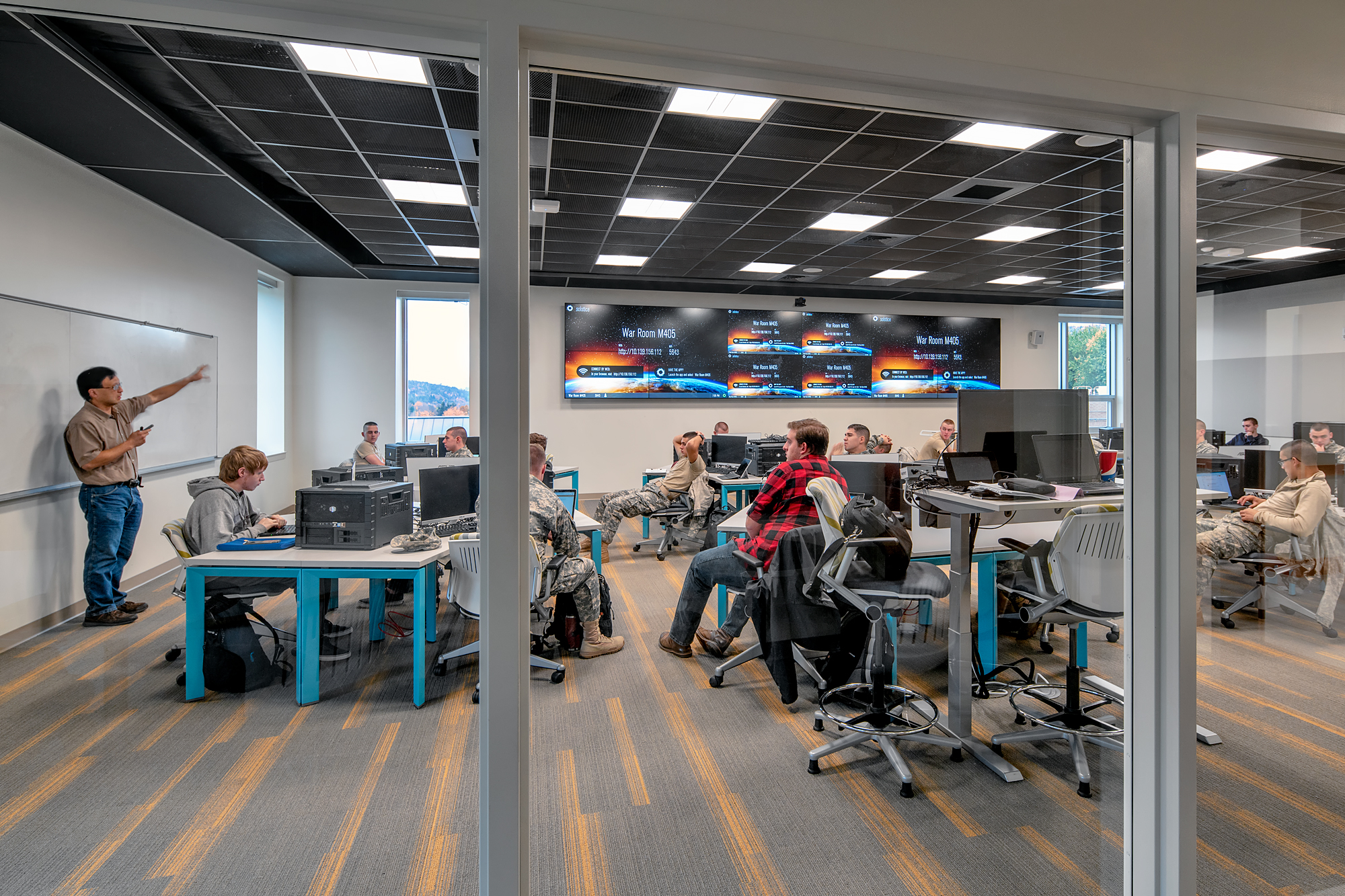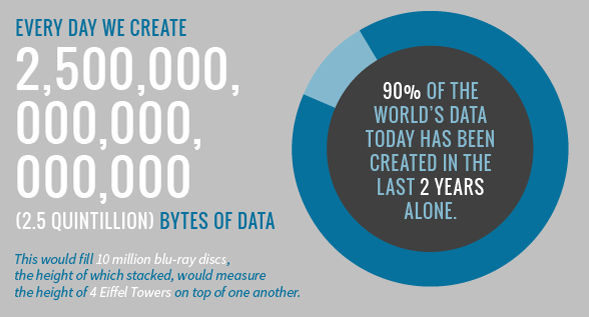Data science has exploded in the higher education space over the last 2 to 3 years. Universities are adding courses, offering new majors, starting new departments and even embarking on plans for new multi-million dollar building projects.
In this article Vantage applies its unique strategic and technology engineering skills to pinpoint why and what it means for the future of research and education by asking:
- What is data science?
- Why is it so hot right now?
- What are the key elements to designing a great data science center?
- How are universities reacting?

From Pexels.com via pixabay under cc0 license
What is Data Science?
Data Science applies the rigors of scientific method, asking questions and testing ideas out of the data that permeates our world. A wide range of disciplines are coming together, using data science, to tease new insights from the information we create to tackle a wide range of multi-disciplinary challenges – from campus planners seeking to optimize the use of campus space to Nobel-prize-winning economists leveraging gaming and social media to revolutionize student-centered curriculum.
Data science is evolving so quickly that it’s hard to put firm boundaries on the definition.
At its most basic level, data science is a multidisciplinary field focused on finding actionable insights from large sets of raw and structured data using a combination of computer science, statistics, machine learning and predictive analytics.
Despite the name, Data Science is not a STEM discipline – the emerging field is fueled by the discovery and collaboration of practitioners from all walks of life – and includes thought leaders from a variety of fields including healthcare, city planning, psychology, sociology, business, economics, entrepreneurs and research.
Why is Data Science So Hot?
Simply put, a confluence of events is driving the data science boom:
- Volume: Our world is filled with data like never before – according to a recent article in Forbes, more than 2.5 quintillion bytes of data are created each day
- Velocity: We now have access to untold processing power and software tools with which to actually process all the data.
- Variety: There is a new culture of cross-discipline collaboration, with thought leaders combining expertise, data, and tools to make new discoveries
Experts are calling the data explosion the Fourth Industrial Revolution and this revolution represents all the new ways in which data and technology are becoming embedded in our lives. Coupled with continued growth in mobile computing, artificial intelligence, online browsing and social media, internet of things, online video and images, and data management, the world is literally buried in data waiting to be analyzed and for insights to be found. Graduating students find data science the most promising job prospect in 2019, with nearly 30% annual growth in demand and pay.
An article titled “Reality Regained: An Inquiry into the Data Age” in MIT Technology Review sums up the situation we are facing today:
“Massive data generation is the distinctive mark of our age, and data availability is its holy grail.”
What are the Key Design Elements for Data Science Facilities?
Based on our experience with designing classrooms and educational buildings and helping institutions with their current and future technology needs, Vantage is in a unique position to help with the technology and space visioning for data science facilities.
Building permeability will be the driving design principle for data science facilities. Permeable learning spaces allow activities, conversations and expertise to readily filter through a building and encourage movement, interaction and collaboration. The main idea behind data science facilities will be to collocate experts together into one place where they can interact and share insights and providing them with a permeable environment with lots of open space, glass walls, whiteboards and pathways that encourage collaboration will be essential.
While any building design starts with understanding a client’s needs through a series of interviews, design thinking workshops and other research, there are certain elements that will be part of any design. Data analytics may even be used to design some of these facilities.
Some high-level features that will likely be standard in data science facilities include:
- Flexible classrooms like the Jones Media Center or any of our Active Learning projects – to make it easy to let the curriculum drive how classrooms are configured, focusing on competency-based skills and problem-solving
- Whiteboards and writing surfaces everywhere – to encourage the flow of ideas across the physical and digital worlds
- Technology – technologies like abundant WiFi, charging stations, screen-sharing monitors and remote video conferencing are the minimum table stakes for any data science facility
- Learning labs like the cybersecurity environment we created at Norwich University – to provide active spaces for students and researchers to interact and use latest tools in real-life situations
- Collaboration, gathering and huddle spaces such as the SandBoxColLABorative at SNHU – to encourage both spontaneous and planned conversations across all disciplines
- Visualization walls or spaces like the Viz Wall we developed at the Brody Learning Commons – to allow students and researchers to readily visualize and collaborate on data analysis and models
- Data centers and network computing power – to process and analyze large amounts of data – some of which will live on campus and some which will live in an off-campus cloud. Developing IT and research computing policies are often a hidden key part of deciding how this function will shape the building and community.

Norwich University Mack Hall – Cyber War Room, Photo Credit: Will Horne
How are Colleges and Universities Reacting to the Data Science Surge?
Institutions are rapidly increasing investments in their data science programs and facilities, in some cases announcing eye-popping initiatives to get to the top.
“Computing is no longer the domain of the experts alone…It’s everywhere, and it needs to be understood and mastered by almost everyone.”
Because of the newness of the field and high demand for data scientists, many Universities and Colleges are augmenting and expanding their existing courses, setting up new degree programs and investing in new departments and buildings to bring the multiple disciplines together under one roof. These programs are vying to be the leader in this nascent field and it will take several years for these investments to begin paying off and leaders to emerge.
To address the need for data scientists, here are excerpts from the announcements of the more notable investments in data sciences programs and facilities since the beginning of 2018:
- Baylor – Baylor University today announced a gift of $3.5 million from Mark and Jennifer McCollum of Houston to create the McCollum Family Chair in Data Sciences within Baylor’s nationally ranked School of Engineering and Computer Science.
- Boston University – Boston University plans to be a leader in educating the next generation in the field by building a dramatic 17-floor tower on Commonwealth Avenue to house the new BU Data Sciences Center.
- Harvard University – Harvard will offer a Master of Science (SM) degree in Data Science beginning in fall of 2018. The new degree, under the joint academic leadership of the faculties of Computer Science in the Harvard John A. Paulson School of Engineering and Applied Sciences (SEAS), and of Statistics in the Faculty of Arts and Sciences (FAS), will train students in the rapidly growing field of data science.
- MIT – MIT announced a $1 billion plan to create a new college that combines AI, machine learning, and data science with other academic disciplines. It is the largest financial investment in AI by any US academic institution to date.
- University of California Berkeley – The University of California at Berkeley today announced a new Division of Data Science and Information. It is the university’s largest program change in decades and helps secure its status among the country’s top data-science research and training hubs.
- University of Illinois Urbana-Champaign – A “world class” data-sciences center for the Urbana-Champaign campus is on a fast track because of state funding allocated to the University of Illinois for the Discovery Partners Institute and its statewide innovation network. The new center is designed to foster data science education programs and pull together faculty research from units at the heart of the growing “big data” movement.
- University of Virginia – UVA is set to announce Friday the launch of a school of data science, backed by a $120 million gift, the largest private donation to the state’s flagship university in Charlottesville. With the school, U-Va. plans to expand a master’s degree program and soon offer bachelor’s degrees in the subject.
From CIO-level technology planning to leveraging data science for new curriculum insights to designing data-science enabled research and learning environments, our consultants have extensive experience at the leading edge of these trends. Contact us to further the discussion or follow the link below to see how we’ve helped other educational institutions succeed.


